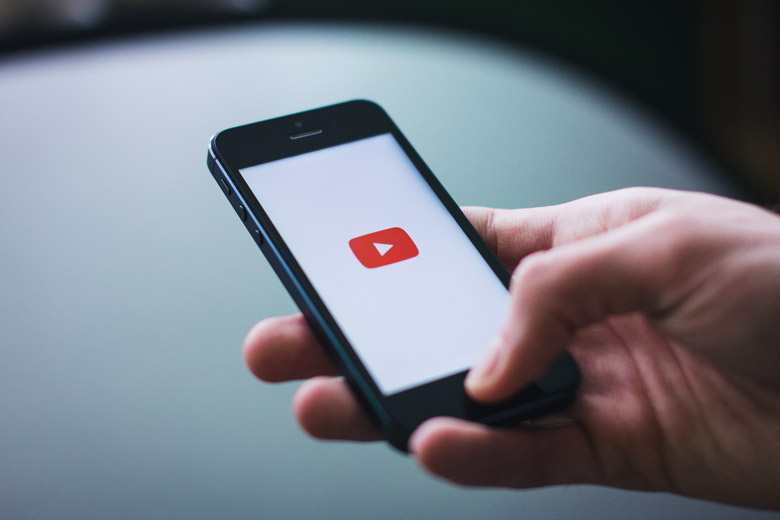This week, YouTube has been making headlines due to new restricted content settings. Over the weekend, a number of prominent YouTube creators brought attention to the fact the recently updated settings were causing their videos and, in some cases their entire channel, to be blocked in YouTube’s Restricted Mode. From gaming channels to comedy, beauty vlogging to pop culture critiques, the thing that unites these YouTubers and their content is that they have LGBT+ content.
This is a problem. This is censorship.
Defended as unintended result YouTube tried to defend the restrictions as being an unintended result of their recently adjusted restricted content algorithm; however, after experimenting, the YouTube community discovered that many videos that included sexually explicit (particularly heterosexual) material, gratuitous profanity or graphically violent content were frequently still available.
As a straight cisgender woman, I was – and still am – lucky to be surrounded by media that reflects my lived experience back at me as I was growing up. I might lack the height, slender body and perfect blowouts of my favourite magazines’ cover models but I’ve always seen my identity reflected back at me. When you grow up seeing yourself in all of the cultural content surrounding you, it might be hard to imagine not having that experience.
One of the best things, in my opinion, that YouTube has provided is a valuable platform for diverse voices, especially the LGBT+ community. YouTube can provide a valuable source of community and resources for youth, one that might not exist at home.
NeonFiona, a YouTuber, commented to Gizmodo that, “Kids who want to know about different orientations and definitions and about the history of LGBT people, etc., they can’t access that when their videos are being restricted. Restricting these videos makes it harder for these kids to find information they need and the community that they’ve been missing.”
Many of the YouTubers that belong to the platform’s LGBT+ community produce primarily non-LGBT+ focused content; for example, Hannah Hart’s My Drunk Kitchen channel started with a (boozy) focus on food, Ingrid Nilsen was a beauty guru/lifestyle vlogger, and Zoe Quinn’s posts are related to video game development. In addition to contributing their voices to the LGBT+ community, they reach a much broader viewership; viewers that don’t identify as LGBT+ but follow them for their primary content topics also benefit from being exposed to these stories and perspectives. After all, we all benefit from open and diverse safe spaces.
YouTube says that they “introduced Restricted Mode back in 2010 as an optional feature to help institutions like schools as well as people who wanted to better control the content they see on YouTube.” While the sentiment behind that is not unreasonable, this can mean that youth who are only able to access media through library and school computers or home computers with parental settings will have an even more challenging time accessing this much-needed content.
What we need to question is why YouTube thinks LGBT+ subjects are considered adult content that needs to be restricted. The vast majority of the videos affected by these recent changes are free of nudity, violence, profanity or other content that is typically agreed upon as being harmful to children. NeonFiona posted side-by-side screenshots on Twitter showing a comparison of her video listing on restricted view and on regular settings; videos with titles that included words like “gay,” “lesbian,” and “bisexual” were hidden when the restricted mode was activated. However, her video “An Honest Chat About Being Single,” which, unlike her LGBT+ videos, actually discusses sex, still appears. YouTubers’ recent experiments with their video titles and keywords make it clear that LGBT+ content is specifically being flagged, not “subjects like health, politics and sexuality” like YouTube claims.
Furthermore, while YouTube’s official statements include a tweet emphasizing their continued support of the LGBT+ community and a larger statement that their “ system sometimes make mistakes in understanding context and nuances when it assesses which videos to make available in Restricted Mode…
“While the system will never be 100 per cent perfect, as we said up top, we must and will do a better job. Thanks to your feedback, we’ve manually reviewed the example videos mentioned above and made sure they’re now available in Restricted Mode – we’ll also be using this input to better train our systems. It will take time to fully audit our technology and roll out new changes, so please bear with us. There’s nothing more important to us than being a platform where anyone can belong, have a voice and speak out when they believe something needs to be changed. We truly appreciate your help keeping the YouTube community active and engaged on topics that matter to creators and YouTube fans alike.”
It’s true that platforms like YouTube are faced with an impossible challenge of moderating content; with approximately 300 hours of video uploaded each minute, it would require over 50,000 full-time staff to moderately moderate the content (if they spent eight hours a day just watching videos). As a result, they rely on a blend of algorithmic classification, users reporting problematic uploads and for content creators to accurately label their uploads.
I’m sure that developing algorithms that can fairly parse out truly inappropriate content is difficult. However, it’s essential that we continue to hold platforms like YouTube accountable to their entire audience and community. While the precise construction of their algorithm is unknown, it’s impossible to deny that some pointed censorship of LGBT+ content is occurring if you look at comparisons of video feeds on regular mode versus restricted modes.
Just like we need to stand up against book banning, we need to stand up against platforms like YouTube, Facebook, et al controlling what content is visible. These voices need to be heard.
– Danielle S. Fuechtmann, Editor-in-Chief






